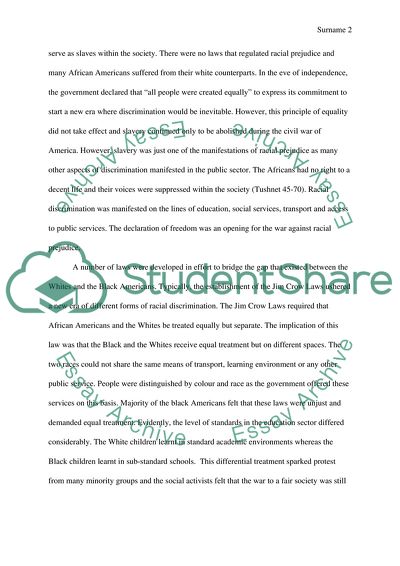Cite this document
(Progressive Transformation of the US Discriminatory Laws Essay Example | Topics and Well Written Essays - 1750 words, n.d.)
Progressive Transformation of the US Discriminatory Laws Essay Example | Topics and Well Written Essays - 1750 words. https://studentshare.org/history/1814944-brown-vs-the-board-of-education
Progressive Transformation of the US Discriminatory Laws Essay Example | Topics and Well Written Essays - 1750 words. https://studentshare.org/history/1814944-brown-vs-the-board-of-education
(Progressive Transformation of the US Discriminatory Laws Essay Example | Topics and Well Written Essays - 1750 Words)
Progressive Transformation of the US Discriminatory Laws Essay Example | Topics and Well Written Essays - 1750 Words. https://studentshare.org/history/1814944-brown-vs-the-board-of-education.
Progressive Transformation of the US Discriminatory Laws Essay Example | Topics and Well Written Essays - 1750 Words. https://studentshare.org/history/1814944-brown-vs-the-board-of-education.
“Progressive Transformation of the US Discriminatory Laws Essay Example | Topics and Well Written Essays - 1750 Words”. https://studentshare.org/history/1814944-brown-vs-the-board-of-education.


